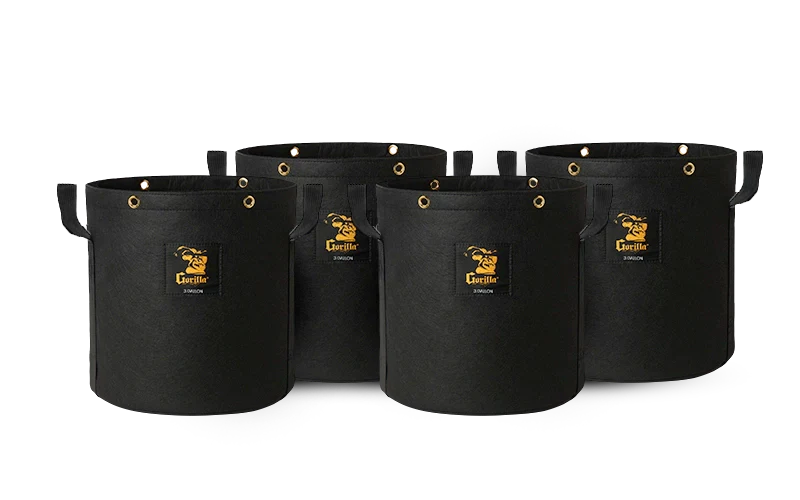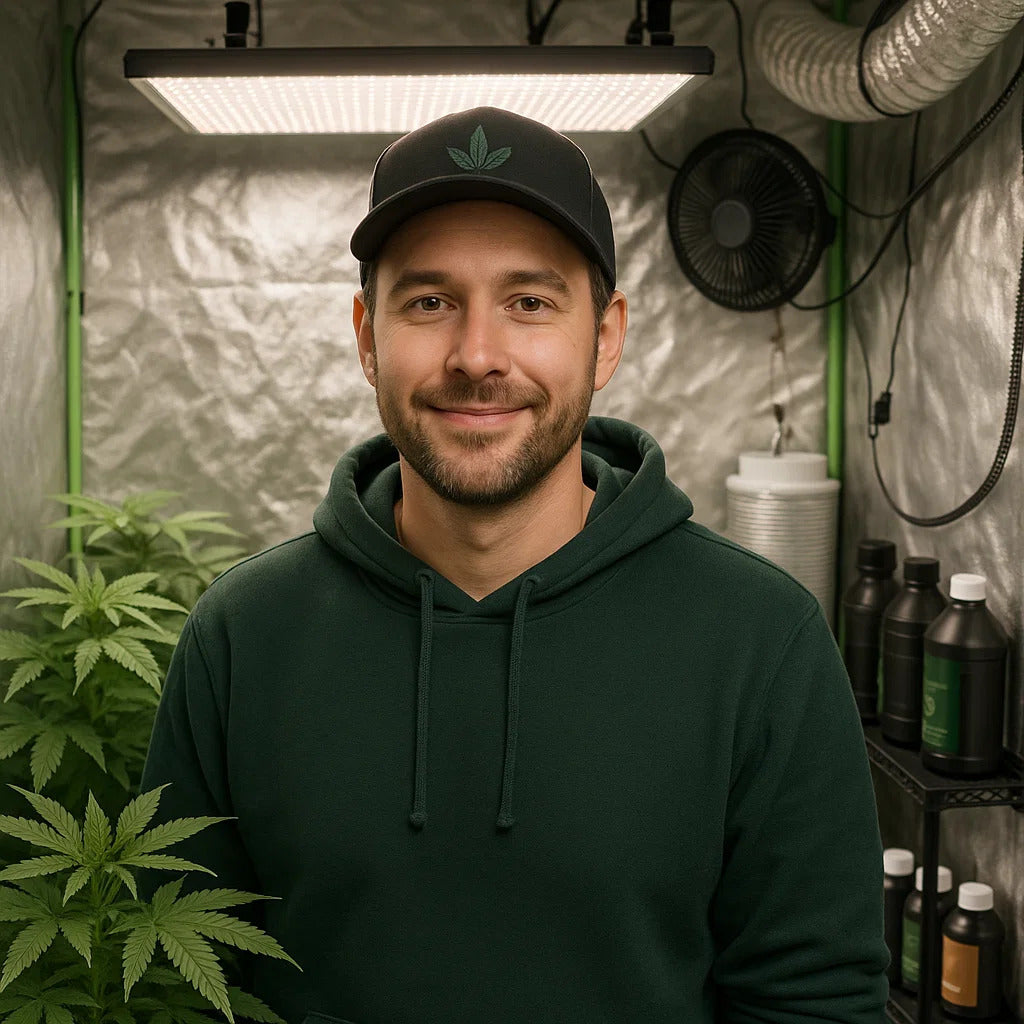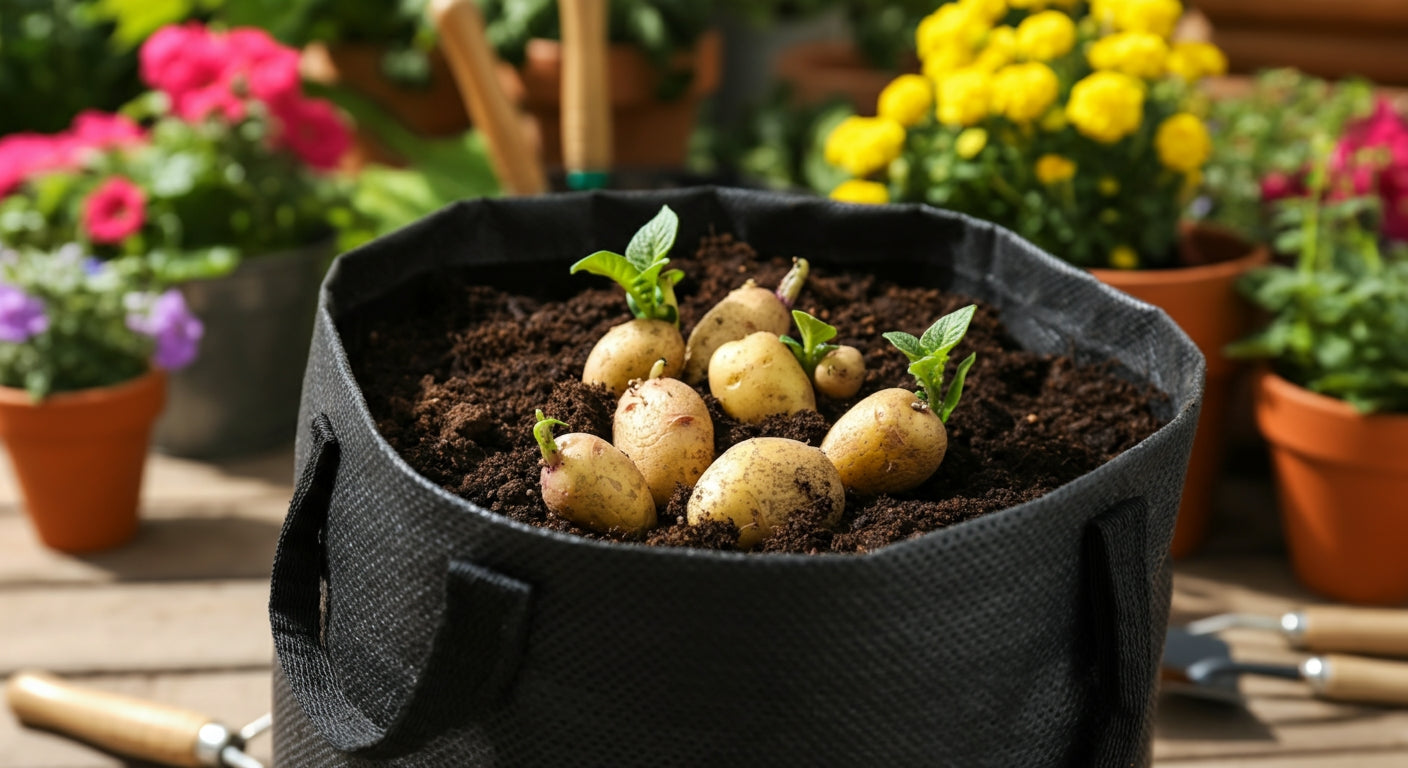
What Size Grow Bag for Tomatoes: Complete Guide to Choosing the Right Container
Determining what size grow bag for tomatoes provides optimal growing conditions represents one of the most crucial decisions for successful container gardening. The right container size directly impacts root development, plant health, yield potential, and overall growing success. Whether you're cultivating compact cherry varieties or sprawling indeterminate plants, understanding proper sizing ensures your tomatoes reach their full genetic potential.
Container tomato growing has revolutionized urban agriculture, allowing gardeners with limited space to produce substantial harvests. However, undersized containers often lead to stunted growth, reduced yields, and increased maintenance demands. This comprehensive guide examines the relationship between tomato varieties and container requirements, helping you make informed decisions for maximum growing success.
Understanding Tomato Growth Patterns and Space Requirements

The Science Behind Root Development
The size of the grow bag matters significantly regarding healthy tomato plant growth. Tomatoes are generally vigorous plants and require a good amount of soil volume for optimal growth. The larger the grow bag, the better the plants can establish and thrive. Root systems directly correlate with above-ground plant vigor, fruit production, and stress resistance.
Fabric grow bags promote air pruning, a process that naturally encourages roots to stop growing when they reach the edge of the bag, leading to stronger and healthier root systems. This creates dense, fibrous root networks that efficiently absorb nutrients and water while preventing root-bound conditions common in traditional containers.
Factors Influencing Container Size Selection
Several critical factors determine optimal grow bag sizing:
Tomato Variety: Different tomato varieties have varying growth patterns and sizes. Smaller tomato varieties, such as cherry tomatoes, require smaller grow bags, while larger varieties, such as beefsteak tomatoes, require additional space for growth.
Growing Duration: Indeterminate varieties that produce continuously throughout the season require more space than determinate types with concentrated harvest periods.
Climate Conditions: Hot climates increase water demand, making larger containers beneficial for moisture retention and temperature buffering.
Available Space: Urban growers often balance optimal plant needs with practical space constraints and portability requirements.
Determinate vs. Indeterminate: Size Requirements Explained
Determinate Tomatoes: Compact Container Options
Determinate tomatoes grow more like a bush, rather than sprawling vines. That means that these varieties will have a more compact nature and less likely to become a big mess and topple over. These varieties have a compact size with a bushy appearance and produce their entire crop simultaneously, making them suitable for gardeners who prefer to harvest and process their tomatoes simultaneously.
Recommended Container Sizes for Determinate Varieties:
- Minimum Size: 7 Gallon Grow Bags provide adequate space for most determinate varieties
- Optimal Size: 10 Gallon Grow Bags allow determinate tomatoes to thrive with improved root development
- Premium Option: 15 Gallon Grow Bags offer maximum growing potential for larger determinate varieties
Most determinate varieties can be grown in 7-gallon bags but thrive in 10 gallon or larger grow bags. It is advisable to choose grow bags with a height of over 11 inches for healthy tomato growth.
Popular Determinate Varieties:
- Roma (ideal for sauces and canning)
- Celebrity (disease-resistant slicing tomato)
- Early Girl (quick-maturing variety)
- Patio (compact variety perfect for containers)
Indeterminate Tomatoes: Maximum Space Requirements
Indeterminate tomatoes continue growing until the end of the season and can reach heights of over 12 feet. These vining plants require substantial root space to support continuous growth and fruit production throughout the growing season.
Recommended Container Sizes for Indeterminate Varieties:
- Minimum Functional Size: 15 gallons (though this requires intensive management)
- Recommended Standard: 20 Gallon Grow Bags provide excellent growing conditions
- Premium Choice: 25-gallon containers for maximum productivity and reduced maintenance
A 20-gallon or larger grow bag is recommended, ensuring a minimum depth of at least 15 inches. Indeterminate tomato plants require more room for their sprawling growth especially since tomato plants are a deeper rooting plant.
Popular Indeterminate Varieties:
- Beefsteak (large, meaty slicing tomatoes)
- Better Boy (high-yielding hybrid variety)
- Brandywine (flavorful heirloom variety)
- Cherokee Purple (distinctive purple heirloom)
- Big Mama (paste-type indeterminate)
Cherry Tomatoes: Special Considerations
Many cherry tomato varieties are indeterminate, meaning that they need a large grow bag to accommodate their big root system. Since they don't stop growing until the end of the season, they also require a trellis or support.
Cherry Tomato Container Recommendations:
- Compact Determinates: 5 Gallon Grow Bags work for patio varieties
- Standard Cherry Varieties: 10 Gallon Grow Bags provide adequate space
- Indeterminate Cherries: 15 Gallon Grow Bags or larger for optimal performance
This size is considered the minimum standard for growing cherry tomatoes. It provides more root space and reduces the need for constant watering and fertilization compared to 5-gallon options.
Professional Size Recommendations by Category
Small Space Solutions (5-7 Gallons)
You can get away with a medium-sized bag (ie. 7-10 gallons) for determinate tomato cultivars, but with most other types, it's better to go for at least 15 gallons to avoid stunting the plant and getting a reduced harvest.
Best Applications:
- Compact determinate varieties
- Cherry tomato patio types
- Urban balcony growing
- Temporary growing situations
Limitations:
- Requires frequent watering
- Increased fertilization needs
- Limited yield potential
- Higher risk of plant stress
Mid-Range Options (10-15 Gallons)
The 10 Gallon Grow Bags represent the sweet spot for many home gardeners, providing adequate space for healthy plant development while remaining manageable in terms of weight and space requirements.
Optimal Uses:
- Most determinate varieties
- Compact indeterminate types
- Beginner container gardening
- Mixed variety growing
The 15 Gallon Grow Bags offer enhanced growing potential with improved root development and reduced maintenance demands.
Premium Large Containers (20+ Gallons)
Choose a grow bag that holds 15-25 gallons. The bigger, the better! The biggest mistake that I see gardeners make is choosing a grow bag that is too small. This will result in stunted growth and an increased risk of toppling over.
20 Gallon Grow Bags provide optimal growing conditions for serious tomato production:
- Maximum root development space
- Reduced watering frequency
- Enhanced nutrient availability
- Improved plant stability
- Higher yield potential

Practical Considerations for Size Selection
Container Dimensions and Shape Importance
The grow bag size is important, not just their capacity. While some are deeper than wide and others wider than deep, both dimensions must be carefully considered for ideal results. Try to ensure the grow bag you're using is at least around 15″ deep. Some are very shallow!
Critical Measurements:
- Minimum Depth: 12 inches for adequate root penetration
- Optimal Depth: 15+ inches for deep-rooted varieties
- Width Considerations: Wider containers provide better stability and root spread
Weight and Mobility Factors
Large containers filled with soil and water become extremely heavy, affecting placement flexibility and seasonal storage. Consider these practical aspects:
- 10-gallon bags: Manageable for most gardeners (approximately 80-100 pounds when full)
- 15-gallon bags: Require two people for safe movement (120-150 pounds)
- 20+ gallon bags: Semi-permanent installations (200+ pounds)
Soil Volume Economics
Larger containers require substantial soil investment, impacting overall project costs. However, the improved plant performance often justifies the additional expense through increased yields and reduced maintenance.
Container Material and Quality Considerations
Why Fabric Beats Plastic
Gorilla Grow Bags utilize ultra-tough 600-gram non-woven fabric that provides superior breathability and root health compared to traditional plastic containers. This professional-grade material offers:
- Enhanced Air Pruning: Prevents root circling and promotes fibrous root development
- Superior Drainage: Eliminates waterlogging and root rot risks
- Temperature Regulation: Prevents overheating common in plastic containers
- Durability: Multi-season use with proper care
Professional-Grade Features
True Gallon Size – Measured to the fill line, ensuring accurate capacity for optimal root development. Many cheaper alternatives use misleading size claims that compromise plant performance.
Key Quality Indicators:
- Fabric Weight: 600-gram fabric provides optimal durability and breathability
- Handle Construction: Reinforced handles support full container weight
- Drainage Properties: Proper water permeability without soil loss
- UV Resistance: Materials that withstand full sun exposure
Installation and Setup Best Practices
Soil Preparation and Filling
Picking the right soil mix is essential to the health of your tomato plants. When grown in a container, you want to ensure that you are using a potting mix because it drains well. You don't want soggy roots! Avoid using plain garden soil as this doesn't drain well enough.
Optimal Soil Composition:
- High-quality potting mix base
- 20-30% compost for nutrition
- Perlite or vermiculite for drainage
- Avoid heavy garden soils that compact
Support System Integration
Traditional tomato cages work excellent with grow bags, but proper installation prevents bag damage:
- Cage Placement: Install cages carefully to avoid puncturing
- Stake Alternatives: Use external support systems for heavy indeterminate varieties
- Height Considerations: Match support height to expected plant size
Sizing for Specific Growing Scenarios
Beginner Recommendations
New container gardeners should start with 10 Gallon Grow Bags and determinate varieties to develop skills before advancing to larger systems. This size provides room for error while delivering satisfying results.
Space-Constrained Growing
Urban gardeners with limited space can maximize production using:
- Multiple 7 Gallon Grow Bags for variety diversity
- Vertical growing techniques with compact varieties
- Strategic placement for optimal sun exposure
Production-Focused Operations
Serious growers prioritizing maximum yields should invest in 20 Gallon Grow Bags or larger, accepting higher initial costs for improved long-term returns.
Common Sizing Mistakes and Solutions
Undersizing Consequences
Let me start off by saying you'd do well to forget about your standard 5-gallon bucket: it's just too small for your plants to ever achieve their full potential. Common problems include:
- Frequent watering requirements
- Nutrient depletion
- Stunted growth
- Increased disease susceptibility
- Reduced harvest yields
Oversizing Considerations
While larger containers generally benefit plants, excessive size can create challenges:
- Increased soil costs
- Mobility limitations
- Space inefficiency
- Potential drainage issues in unused soil zones
Maintenance and Care Adjustments
Watering Frequency by Size
Container size directly affects watering schedules:
- Small Containers (5-7 gallons): Daily watering often required
- Medium Containers (10-15 gallons): Every 1-2 days depending on conditions
- Large Containers (20+ gallons): Every 2-3 days with established plants
Fertilization Strategies
Larger containers provide greater nutrient buffering capacity, allowing more forgiving fertilization schedules. Smaller containers require more frequent, lighter feeding to prevent nutrient buildup or deficiency.
Seasonal Considerations and Planning
Multi-Season Container Use
Gorilla Grow Bags support multi-season use with proper cleaning and storage. Larger containers justify their initial investment through extended service life and consistent performance.
Succession Planting Options
Large containers support succession planting strategies, allowing multiple crops per season or extended harvest periods with proper variety selection.
Advanced Techniques for Container Optimization
Container Grouping Strategies
Strategic arrangement of different-sized containers maximizes space efficiency while meeting individual plant needs. Combine various sizes to create diverse growing systems.
Automation Integration
Larger containers support automated watering systems more effectively, reducing daily maintenance while improving consistency. Consider drip irrigation for containers 15 gallons and larger.
Troubleshooting Size-Related Issues
Diagnosing Insufficient Space
Signs your tomato plants need larger containers:
- Rapid soil drying despite adequate watering
- Stunted growth compared to variety expectations
- Premature flowering with small fruit
- Yellowing leaves despite proper nutrition
- Top-heavy plants prone to tipping
Corrective Actions
When containers prove too small:
- Emergency Transplanting: Move to larger containers if caught early
- Intensive Management: Increase watering and feeding frequency
- Support Enhancement: Add structural support to prevent tipping
- Variety Selection: Choose more compact varieties for next season
Economic Analysis: Size vs. Value
Cost-Benefit Considerations
While larger containers require higher initial investment, they often provide better long-term value through:
- Increased Yields: Larger plants produce more tomatoes
- Reduced Labor: Less frequent watering and maintenance
- Plant Health: Healthier plants resist diseases and pests
- Multi-Season Use: Durable containers serve multiple growing cycles
Break-Even Analysis
Most gardeners find that 15 Gallon Grow Bags offer optimal value, balancing performance benefits with reasonable costs and space requirements.
Conclusion: Making the Right Choice
Selecting what size grow bag for tomatoes requires balancing plant needs, available space, budget constraints, and growing goals. While minimum requirements vary by variety, investing in appropriately sized containers pays dividends through healthier plants, higher yields, and reduced maintenance demands.
Quick Reference Recommendations:
- Determinate Varieties: 10 Gallon Grow Bags minimum, 15 gallons optimal
- Indeterminate Varieties: 15 Gallon Grow Bags minimum, 20 gallons preferred
- Cherry Tomatoes: 7-15 Gallon Grow Bags depending on variety
- Beginner Growers: 10 Gallon Grow Bags with determinate varieties
Remember that bigger containers generally provide better results, but the optimal choice depends on your specific growing situation. Gorilla Grow Bags offer professional-grade quality across all sizes, ensuring your investment supports successful tomato growing regardless of container choice.
Start with quality containers that match your variety selection and growing goals. Your tomatoes—and your harvest—will thank you for providing adequate root space to reach their full potential.

Lena Myles
I'm a mushroom enthusiast and home cook based in Oregon. I'm passionate about foraging and creating fungi-focused recipes, especially delicious, plant-based dishes using gourmet mushrooms like trumpet, shiitake, and oyster. When I’m not in the kitchen, you’ll usually find me wandering the woods in search of new wild flavors.


